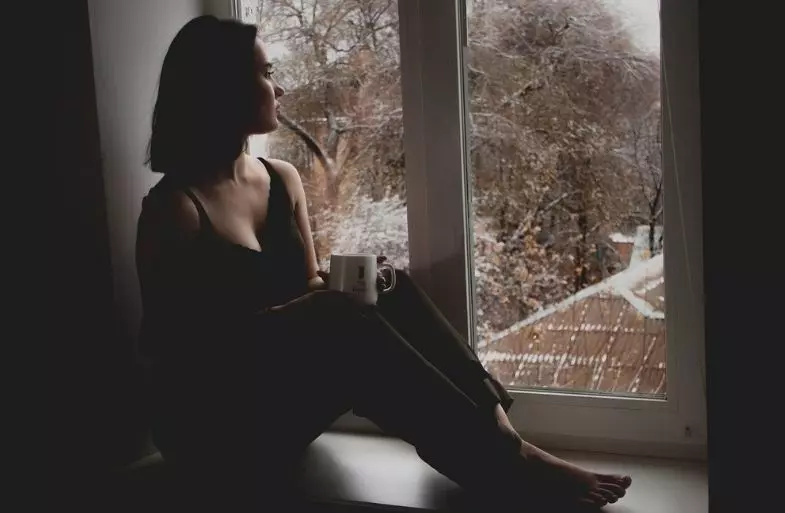Does seasonal depression really exist?
Yes, the seasonal affective disorder is a form of depression also known as seasonal depression or winter blues, otherwise, it is called SAD (combining the initials of Seasonal Affective Disorder), playing on the meaning of “sad”. In seasonal depression, mood changes occur during the autumn and winter months when there is less sunlight and usually improve with the arrival of spring. In our hemisphere, the toughest months for people with SAD tend to be December, January, and February.
What is seasonal depression?
With short and cold days, seasonal depression can appear in those who are predisposed. Among the characteristics of the disorder, the tendency to eat more, especially carbohydrates
It arrives punctually every autumn-winter. Now we’re in full swing as a period, it’s seasonal depression. Winter sadness. All the more so as Christmas approaches, for some, the Christmas Blues: that painful envy for those who buy gifts, enjoy the thousands of lights, the prospect of parties, have a happy family to be together with. Those with seasonal depression do not know how to enjoy the promise of the party, far from it, and they feel alone (even when in reality they are not).
Seasonal depression, however, is more than just winter blues – symptoms can be painful and overwhelming and interfere with daily functioning. They include fatigue, excessive sleep, weight gain associated with carbohydrate cravings, depressed mood, restlessness, loss of interest in activities once deemed satisfactory, and difficulty concentrating or making decisions.
The good news is that SAD can be effectively treated in a number of ways, through light therapy, cognitive-behavioral psychotherapy, and if symptoms are important even with pharmacological help.
Seasonal depression therapy
Light therapy consists of the use of a particular lamp that emits a very intense light and filters ultraviolet rays, it can be used simply at home, usually with applications of 20 minutes or more a day, in the morning, for the entire duration. of winter. Most people derive many benefits from light therapy within one or two weeks of starting treatment.
Due to the return of symptoms in the late fall, some people may start light therapy in October. For some people, increased exposure to sunlight, such as spending time outside or arranging the home and office to face a window during the day, can help. Getting regular exercise, eating healthy, getting enough sleep, and staying active and connected (participating in group activities and being with friends and family) are all strategies that can help therapies work better and faster.
How to prevent seasonal depression?
If you think you have the symptoms of SAD, seek the help of a specialist. Just like in other forms of depression, it’s important to make sure there aren’t any medical conditions causing the symptoms. Additionally, seasonal depression can be mistaken for hypothyroidism, hypoglycemia, mononucleosis, and other viral infections, so proper assessment is critical. A mental health professional can diagnose the seasonal affective disorder and discuss treatment options. With the right treatment, SAD is a perfectly overcome condition.
The risk factors of seasonal depression
Fortunately, it doesn’t happen to everyone. As with other mood and affective disorders, Sad is established if the person has a biological predisposition, a vulnerability that makes him or her fragile in the face of shorter, darker, colder days. According to the National Institute of Mental Health, the risk factors for seasonal depression (there is also one for the summer) are age, gender, distance from the equator, and a history of depression or other mood disorders. . For age, studies have shown that young adults are more predisposed (2 to 1) and for sex women get sick more than men (four times more, according to some research).
How seasonal depression magnifies?
Among the symptoms are reported in particular a sense of fatigue that is tried to alleviate with hypersomnia, chronic black mood, a strong desire for carbohydrates, which can lead to excessive weight gain. Seasonal depression can severely interfere with productivity and one’s a day-to-day lifestyle when symptoms – if accentuated – can prevent the person from leaving the house, seeing people, engaging in any of the normal activities that normally interested him.
Phototherapy against winter blues
What can be done against the lack of drive, the feeling of worthlessness, debilitating fatigue? The first answer could be a lamp. Not that of Aladdin, but another that may not work miracles, but will alleviate your sadness. If the lack of sun is at the root of the unleashing of seasonal depression in the gray autumn-winter, you can fight back with light therapy, also called phototherapy.
It is essential to consult your doctor or a specialist and avoid do-it-yourself, both for the choice of the lamp and for the exposure modalities. Specialists suggest, in general, that it is quite large, fluorescent, and better than white (or even blue, but never yellow) light.


